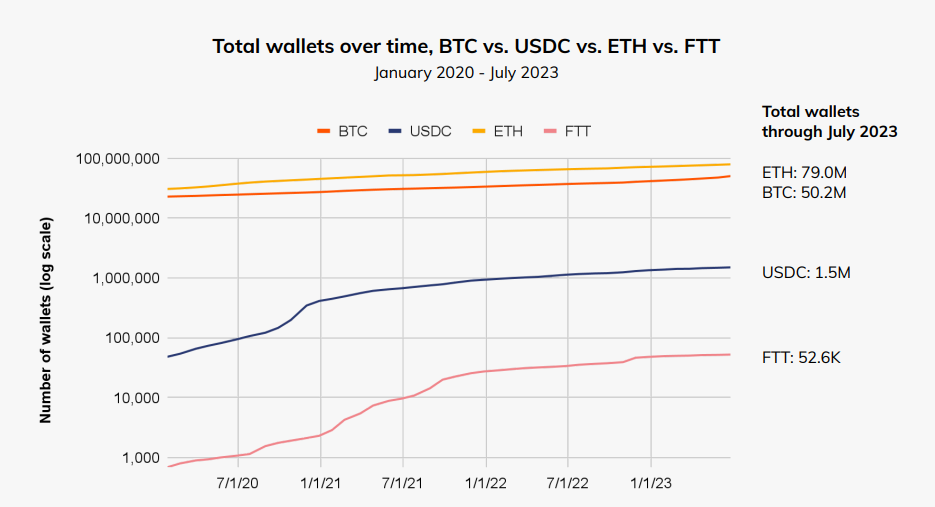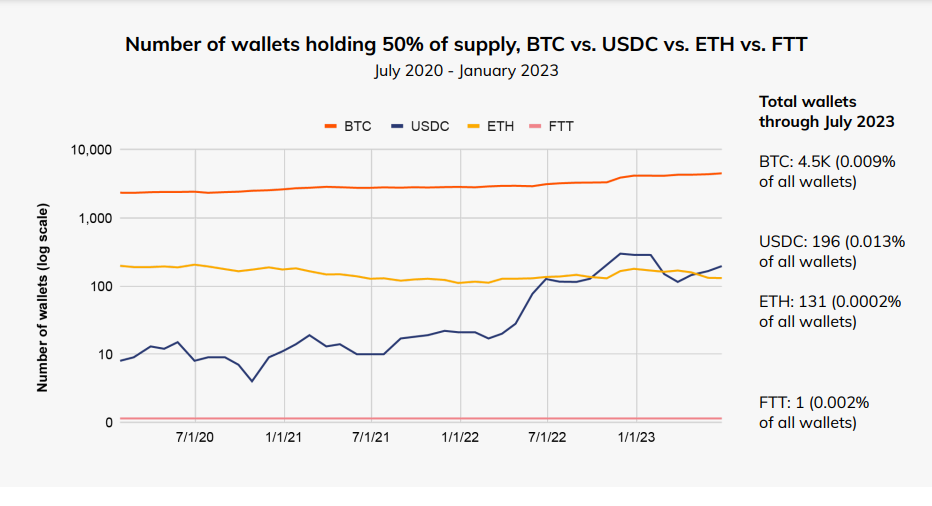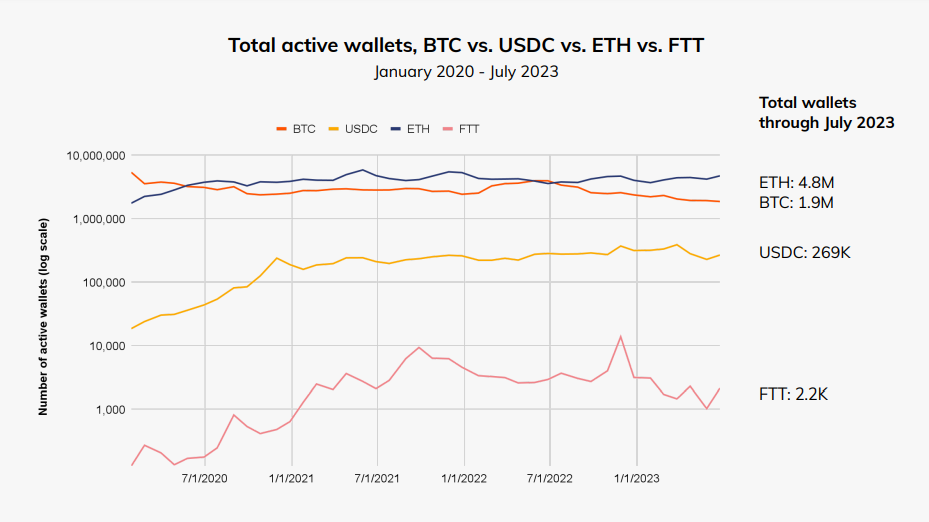- Ethereum, the second largest cryptocurrency, has been identified as the most widely distributed cryptocurrency with approximately 79 million wallets holding tokens as of July 2023.
- The small number of wallets for stablecoin USD Coin (USDC) and exchange token FTT reflects the crises that have surrounded these two tokens in the past year. FTT’s demand paused after its parent company FTX collapsed.
- Recently, there has been a significant increase in demand for BTC as a safe haven asset or inflation protection. Naturally, people prefer to hold it for long-term gains rather than quick profits.
The trust in Bitcoin and Ethereum by investors is also supported by current data; the supply of Bitcoin on exchanges is decreasing.
The Impact of DeFi on Bitcoin and Ethereum
Despite the ups and downs, the vast universe of cryptocurrencies continues to captivate both the public and major institutional investors. Experienced traders analyze key blockchain metrics effectively to invest in these assets due to their perceived strength and potential for significant gains.
Ethereum, the second largest cryptocurrency, has been identified as the most widely distributed cryptocurrency with approximately 79 million wallets holding tokens as of July 2023. According to this data, Bitcoin, the king of cryptocurrencies, had slightly over 50 million unique owners.
A more widespread distribution can reflect owners’ opinions about an asset or their expectations of future price increases. The explosion of decentralized finance (DeFi) built largely on the Ethereum blockchain in the past three years has played a significant role in the adoption of ETH.
The small number of wallets for stablecoin USD Coin (USDC) and exchange token FTT reflects the crises that have surrounded these two tokens in the past year. FTT’s demand paused after its parent company FTX collapsed, while USDC faced difficulties due to the US banking crisis.
However, a wider distribution alone is not sufficient to protect an asset from price volatility risks. If a disproportionately large portion of the supply is held by a few powerful owners, it can lead to market manipulation and higher price fluctuations. Therefore, the degree of decentralization in ownership becomes a critical factor.
According to the report, Bitcoin emerged as the most decentralized asset, with nearly 0.009% of all wallets holding 50% of the supply. In contrast, Ethereum had approximately 131 assets or wallets, accounting for about 0.0002% of all wallets.
Perhaps the biggest shock was that FTT only had 50% of its supply held in a single wallet. Chainalysis stated:
“When concerns about the FTX company and the issues that led to its collapse are evaluated independently, this level of supply density should be seen as red flags for investors evaluating the FTT token.”
Ethereum Stands Out in Trading Activities Compared to Other Assets
Holding a token is one aspect of the adoption process. However, the real test comes when it is actively used to facilitate transactions. Monthly active wallet count is important for making these evaluations.
Similar to the number of large wallets, Ethereum also stood out as the most liquid cryptocurrency actively used in approximately 4.8 million wallets as of July 2023. Bitcoin ranked a distant second, with the world’s largest cryptocurrency being actively traded in 1.9 million wallets.
It was evident that Bitcoin’s trading activity had softened since the 2022 crypto winter. The unprecedented HODLing mentality displayed in 2023 also caused inactivity in many wallets.
On the other hand, the 2020 DeFi summer and the 2021 bull market made ETH a significant commodity. The token was heavily used to pay transaction fees on numerous platforms built on the network.
Similarly, the growth trajectory of USDC highlighted its usage as a settlement tool on decentralized exchanges (DEXs).
Emotional Shift Around Bitcoin
The above chart was also useful in understanding that Bitcoin is still primarily used as a transaction token. On the other hand, Ethereum’s smart contract revolution has helped expand its boundaries extensively.
This has also been further emphasized by looking at the market composition of different assets. A significant portion of ETH supply is locked in De



